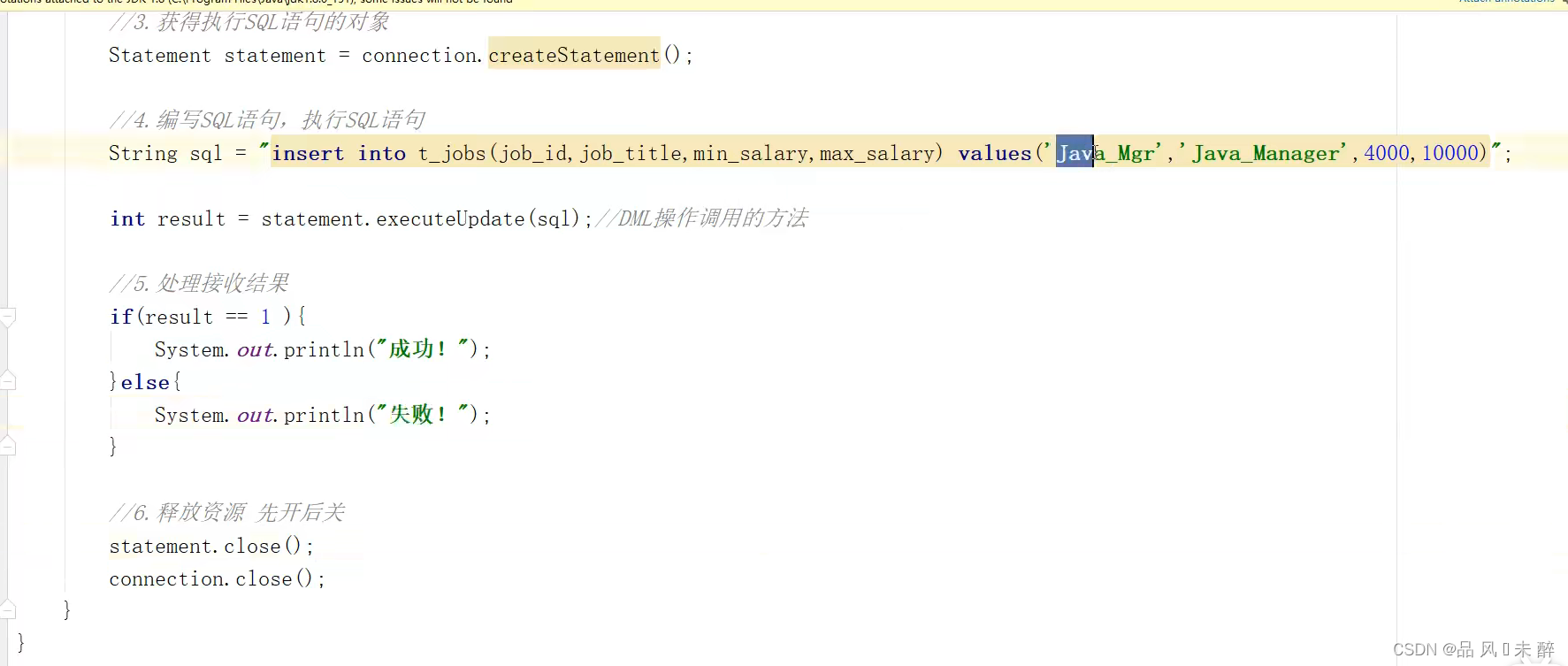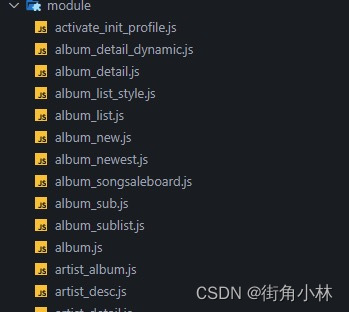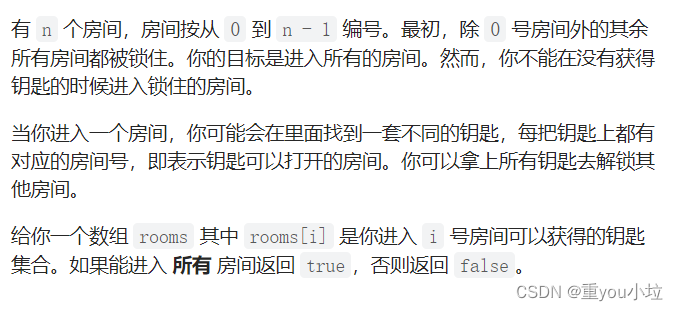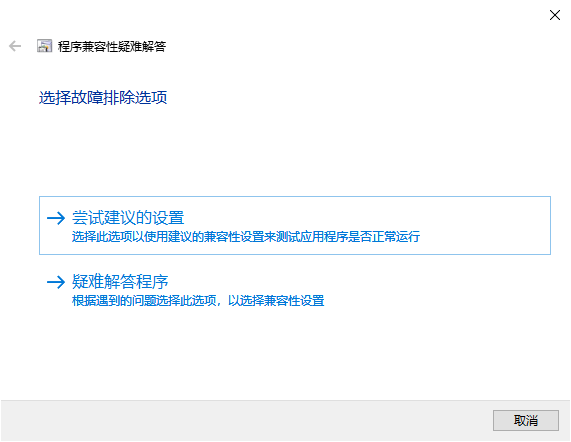当前位置:网站首页>Bit operation XOR
Bit operation XOR
2022-07-06 07:17:00 【Yang Yi】
Catalog
1.136. A number that appears only once - Power button (LeetCode)
2.190. Invert binary bit - Power button (LeetCode)
3.461. Hamming distance - Power button (LeetCode)
4.1486. Array XOR operation - Power button (LeetCode)
5.477. The sum of Hamming distances - Power button (LeetCode)
6.1720. Decode the XOR array - Power button (LeetCode)
One 、 Knowledge point
1. Exclusive or operator
- The XOR operator has two operands , Expressed as x ^ y
- Operate on each bit of the operand , If the two numbers are the same, the result is 0, Different for 1.
- Any number and 0 The XOR result of must be In itself
- Satisfy the law of exchange and the law of union
| Left operand | Right operands | result |
| 0 | 0 | 0 |
| 0 | 1 | 1 |
| 1 | 0 | 1 |
| 1 | 1 | 0 |
2. application
(1) The flag bit is reversed
Give a number , Reverse the fourth digit from its low number ,0 change 1,1 change 0
x^0b1000
// and 0 The result of XOR is itself , So the last three 000,0^1=1,1^1=0, Meet the conditions , Using XOR .(2) Variable exchange
Given two numbers a and b, Exchange their values with XOR
a=a^b;
b=a^b;
a=a^b;
explain : amount to b=a^b^b=a // XOR satisfies commutative law and associative law b=a^(b^b) , We know that two identical numbers are exclusive or 0, And any and 0 The number of exclusive or , All for themselves , therefore b=a;
a=a^b^(a^b^b)=a^b^a=(a^a)^b=b
(3) An odd number of times
Input n Number , Only one of them appears odd times , All other numbers appear an even number of times , Find the number that appears odd times
explain : The result of two identical numbers exclusive or is 0, That is, the result of all the number XORs that occur an even number of times is 0, hold n Number XOR , The resulting number is a number that occurs an odd number of times .
Two 、 exercises
1.136. A number that appears only once - Power button (LeetCode)
class Solution {
public:
int singleNumber(vector<int>& nums) {
// According to the nature of the xor , The result of two identical numbers exclusive or is 0, All number XORs that occur an even number of times are 0, hold n The numbers are exclusive or , The final number is the number of odd numbers
int ans=0;
for(int i=0;i<nums.size();i++)
{
ans^=nums[i];
}
return ans;
}
};2.190. Invert binary bit - Power button (LeetCode)
class Solution {
public:
uint32_t reverseBits(uint32_t n) {
uint32_t rev = 0;// And 0 XOR is itself .
for (int i = 0; i < 32 && n > 0; ++i) {
rev ^= ((n & 1) << (31 - i));//n&1 Judge n Parity , That is to say n The last place is 0 still 1
n >>= 1;
}
return rev;
}
};3.461. Hamming distance - Power button (LeetCode)
class Solution {
public:
int hammingDistance(int x, int y) {
int sum=0;
x=x^y;
while(x)
{
sum+=x&1;
x>>=1;
}
return sum;
}
};4.1486. Array XOR operation - Power button (LeetCode)
class Solution {
public:
int xorOperation(int n, int start) {
int x=0;
for(int i=0;i<n;i++)
{
x^=start+2*i;
}
return x;
}
};5.477. The sum of Hamming distances - Power button (LeetCode)
class Solution {
public:
// Only 1 ^ 0 , If the array 3 The numbers on the same bit are 0,1,1 Then the sum of the Hamming distance is 2. namely 1*2.
// On all positions 0 The number of * 1 The number of And That is, the number of Hamming distance .
int totalHammingDistance(vector<int>& nums) {
int sum=0,n=nums.size();
for(int i=0;i<30;i++)//nums[i]<=10^9. 2^30>10^9 Enumerate to 29 that will do . i<32 It can also be done through
{
int c=0;
for(int num:nums)
{
c+=(num>>i)&1;// Take out No i The value of a , Calculation 1 The number of .
}
sum+=c*(n-c);
}
return sum;
}
};6.1720. Decode the XOR array - Power button (LeetCode)
class Solution {
public:
//arr[0]^arr[1]=encoded[0];
// Simultaneous XOR on both sides arr[0].
// obtain arr[1]=encoded[0]^arr[0];
// And so on .
//arr[i]=encoded[i-1]^arr[i-1];
vector<int> decode(vector<int>& encoded, int first) {
int n=encoded.size()+1;
vector<int> arr(n);
arr[0]=first;
for(int i=0;i<n-1;i++) // The maximum subscript is encoded.size()
{
arr[i+1]=encoded[i]^arr[i];
}
return arr;
}
};Reference column :
边栏推荐
猜你喜欢

杰理之开发板上电开机,就可以手机打开 NRF 的 APP【篇】

Seriously recommend several machine learning official account

JDBC learning notes

Week6 weekly report

How are the open source Netease cloud music API projects implemented?

leetcode841. Keys and rooms (medium)

升级版手机检测微信工具小程序源码-支持多种流量主模式

CDN acceleration and cracking anti-theft chain function

win10 64位装三菱PLC软件出现oleaut32.dll拒绝访问
![[server data recovery] case of offline data recovery of two hard disks of IBM server RAID5](/img/c3/7a147151b7338cf38ffbea24e8bafd.jpg)
[server data recovery] case of offline data recovery of two hard disks of IBM server RAID5
随机推荐
微信脑力比拼答题小程序_支持流量主带最新题库文件
#systemverilog# 可綜合模型的結構總結
leetcode704. Binary search (find an element, simple, different writing)
#systemverilog# 可综合模型的结构总结
How MySQL merges data
位运算异或
“无聊猿” BAYC 的内忧与外患
OpenJudge NOI 2.1 1661:Bomb Game
首发织梦百度推送插件全自动收录优化seo收录模块
Cif10 actual combat (resnet18)
Oracle数据库11gr2使用tde透明数据加密报错ora28353,如果运行关闭wallet会报错ora28365,运行打开wallet就报错ora28353无法打开wallet
Babbitt | metauniverse daily must read: the group image of Chinese Internet enterprises pouring into metauniverse: "there are only various survival desires, and there is no ambition for forward-lookin
Multi attribute object detection on rare aircraft data sets: experimental process using yolov5
数字IC设计笔试题汇总(一)
LeetCode Algorithm 2181. 合并零之间的节点
How to configure GUI guide development environment
[some special grammars about C]
多线程和并发编程(二)
呆错图床系统源码图片CDN加速与破解防盗链功能
【mysql学习笔记29】触发器